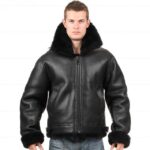You’ve got a great knife that you can’t leave behind when you head out into the great outdoors. Your knife needs performance to cut branches, messer kaufen skin your catch or clean it. At the end of the day or hunt, your knife has done its job. How long your knife lasts depends on how you care for it. To help you keep your knife in perfect condition, here are a few tips to follow.
- Special knives are just that, for a special purpose. For example: A skinning knife is only used for this purpose. You don’t want to use this knife to cut branches or as a pry bar. They will only dull your knife or ruin it altogether.
- 2. Cleaning your knife after each use is a must. The blade definitely needs cleaning, but don’t forget about the handle and even the shaft. Use running water to clean your knife, remember never to soak your knife. Dry your knife thoroughly as moisture on your knife can lead to rust and an inefficient knife. Keeping your knife dry can be difficult, especially when you are in a humid environment. Get in the habit of drying your knife after use, especially if it’s your favorite knife. Use a leaf on the field to dry off your knife. If your knife is carbon steel, you can also use baking soda and water. Only use clear water and washing-up liquid for stainless steel knives. Try not to touch your stainless steel knife. Acid left on the blade from your fingerprint can actually stain your knife, and overtime will cause corrosion. Never put your knife in a dishwasher as the detergent contains abrasives and salt which can cause corrosion.
- Oil your knife regularly to avoid friction. Oil can form a protective layer on the blade that prevents rust from forming. When you have a folding knife, oil is more important for the moving parts and joints. Use the same oil you use for your firearms or just household oil. Some oils can leave an aftertaste in your meat, in this case use a food grade mineral base oil. Be careful when oiling your grip as this will cause it to become slippery. Wooden handles can be treated with linseed oil. Remember that a little oil goes a long way. If your grip is made of rubber or man-made materials, nothing is required. But if you feel the need, treat it with armor. Leather handles can be treated with mink oil. This also works well with sheaths. Bone or split stag handles should be cleaned with soap and water. Crevices and cracks in your knife can lead to dirt build-up that can draw in moisture and damage your knife.
- Have your knife serviced if you notice your blade is dull or your knife is losing its shine. If you don’t know how to sharpen your knife, it might be a good idea to take it to a professional and have them do it for you. There are professionals out there, you just have to look for them. There are even some that will let you mail your knife in and when they are done they will mail it back to you. A dull knife on your journey will only do more harm than good. If you have experience or think you can sharpen your knife yourself, go for it. Don’t be afraid to ask a professional for help.
- Your knife should be stored in a moisture-free environment to keep it dry. Your leather sheath is a great place to keep your knife in the field, but don’t keep it there for long. The chemicals they use in the leather sheath can damage the blade of your knife. You need something non-acidic to store your knife in. To store your knife for a long time, use paper and wrap your knife in it, then put it in a plastic bag with a desiccant to keep it dry.
A quality knife should last a lifetime. With a little effort and proper care, you can enjoy your knife outdoors for a long time.
How do you choose your knife set?
The chef’s knife is the most commonly used, so you should choose your set mainly on that. You can find tons of information on how to choose a chef’s knife, but here’s the most important thing – the handle must be comfortable in your hands and the blade should be made of decent steel. How do you recognize the steel? The simplest answer is, if it’s a well-known company, they probably use decent steel. If you really want a valuable opinion, call the professional who will sharpen your knives and ask for a recommendation. If you ‘re planning on shopping online and can’t go to the store and hold the knives in your hand, look for a handle that appears ergonomic and doesn’t have hard corners that can cause calluses.
In second place is the appearance of the set. Now I’m not being vain, but really, being able to display your knives in a beautiful block right on the countertop adds a real touch of skill to any kitchen. So choose a set you can be proud of. You’ll probably see it every day, so make sure it goes well with the kitchen’s look and feel and be happy to see it in your home.


